If you are new to sushi, a Japanese restaurant may be a little intimidating with menu items such as maki rolls, sashimi, or nigiri. Fear not, we have all been there. In this article we will walk you through the various types of sushi and sashimi and how they are all different from each other.
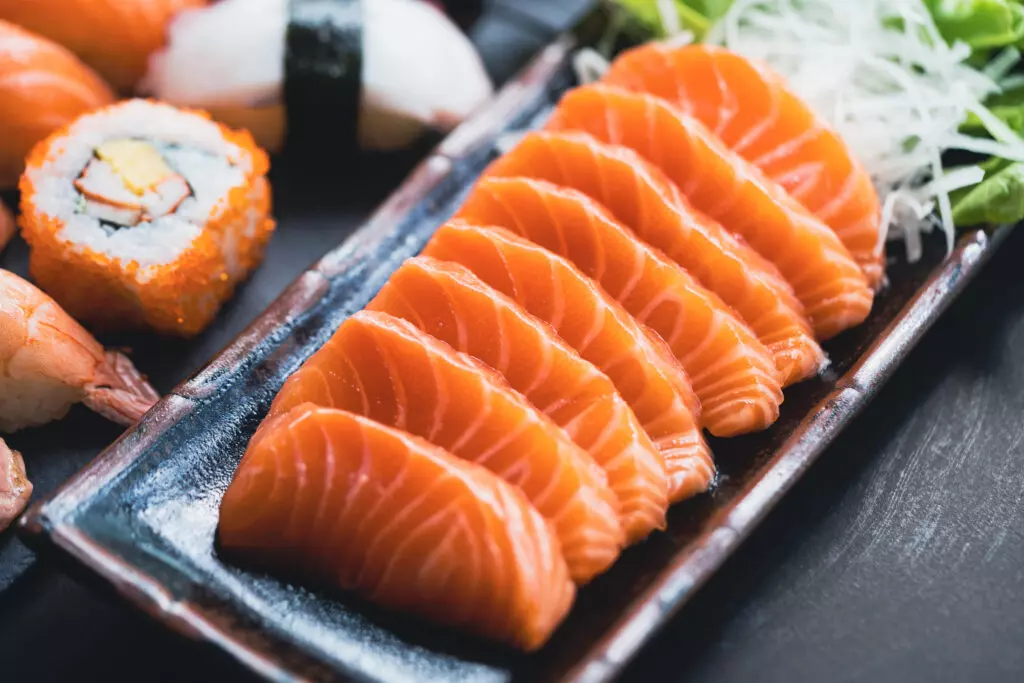
Table of Contents
What is Sushi?
Sushi is a Japanese dish that consists of rice and a filling that is usually some sort of raw seafood. Modern variations add different ingredients such as cooked fish, vegetables, and even cream cheese. The fillings and rice are combined using different methods, depending on the type of sushi that you are eating.
Regardless of the type, the most important component of sushi is the rice, which is a short to medium-grain rice that is seasoned with sushi vinegar. The thing that makes sushi rice unique is its sticky texture that clumps together easily, making it easy to combine with fish and form into the various types of sushi.
Types of Sushi
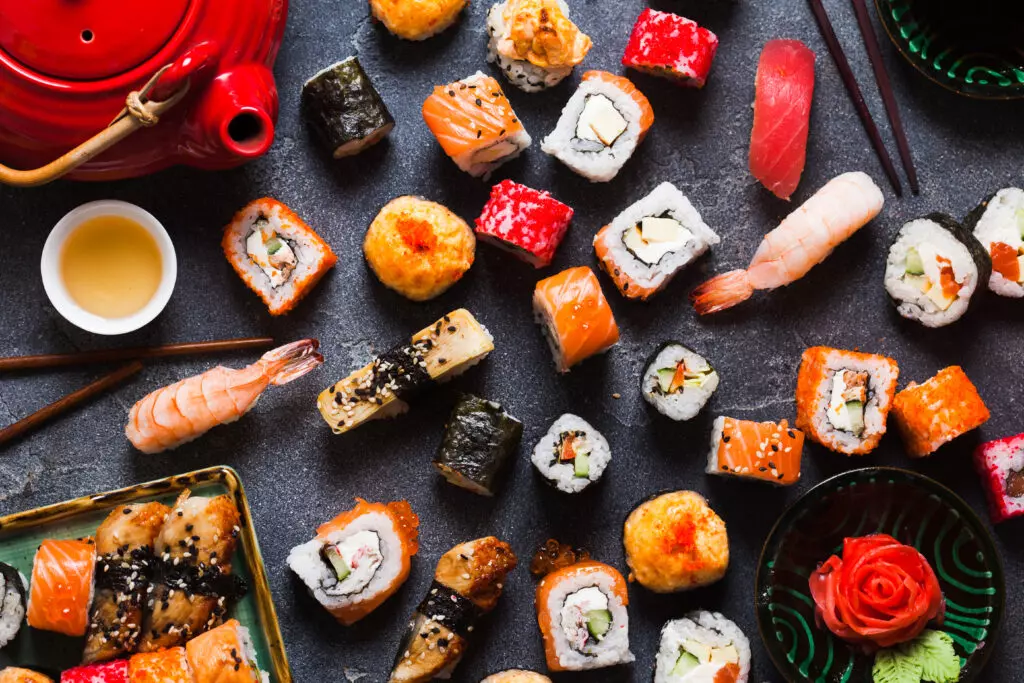
While most people think of sushi as colorful rolls filled with seaweed and fish, there are a variety of types of sushi that have different preparation techniques, appearances, and ingredients.
Maki
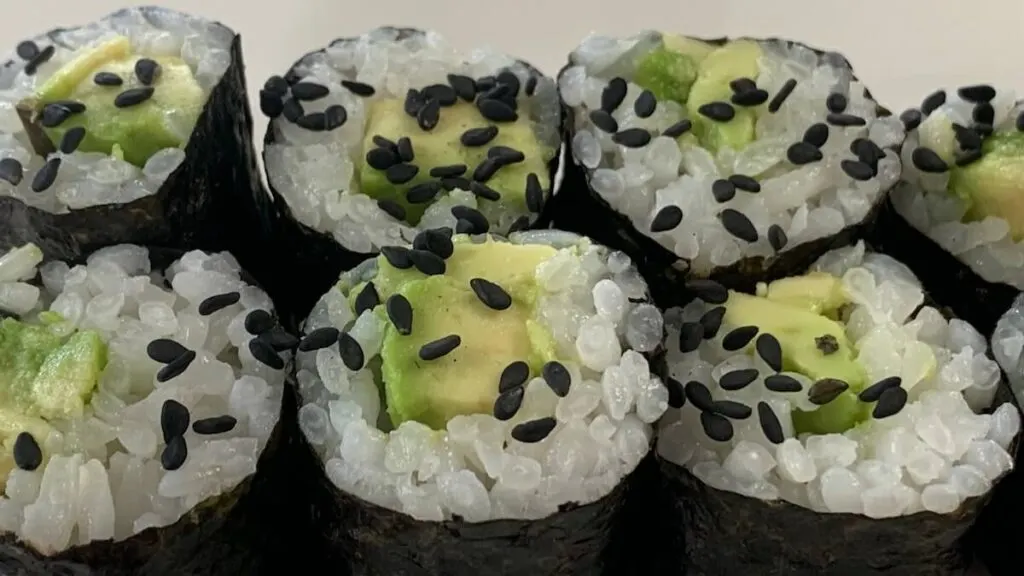
When most people think of sushi, maki is usually what they have in mind. You are likely to find maki anywhere that sells sushi, even your local grocery store.
Maki sushi is made by first pressing sushi rice onto a sheet of seaweed called nori. The toppings are then placed on the rice and are rolled together to form a sushi roll (often with the assistance of a bamboo sushi mat). The roll is then cut into six or seven pieces and is typically served with soy sauce, wasabi paste and pickled ginger. The final pieces have a round shape with fillings in the center and are typically eaten with chopsticks.
There are several varieties of maki sushi. The colorful ingredients used often make your dining experience an artistically beautiful experience in addition to a very tasty one. Depending on the combination of ingredients used, maki rolls can differ in thickness, with some pieces being delicate and thin while others are thick and chunky. Some types of maki sushi even have toppings such as fish roe.
Maki must have the seaweed, or nori, to be considered maki.
Uramaki
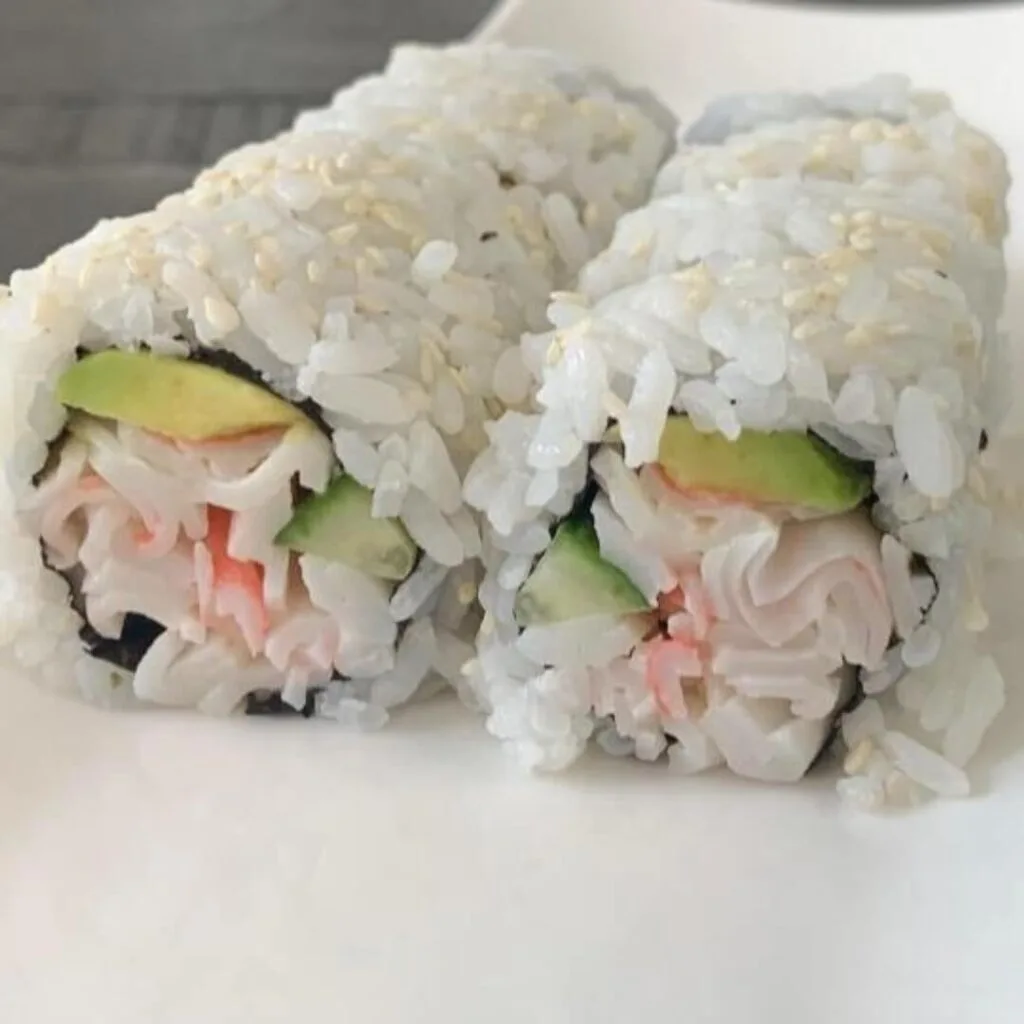
Often called inside-out maki, uramaki rolls are just like maki rolls except the rice is on the outside of the nori roll rather than inside with the filling.
For those not quite ready to try raw fish, there are several different cooked options such as the California Roll, Philadelphia Roll and Boston Roll, all of which are uramaki rolls.
Like maki, colorful ingredients make this uramaki a beautiful dish. Some types of uramaki sushi even have toppings such as fish roe.
Uramaki also has to have seaweed and be rolled to be classified as uramaki.
Nigiri
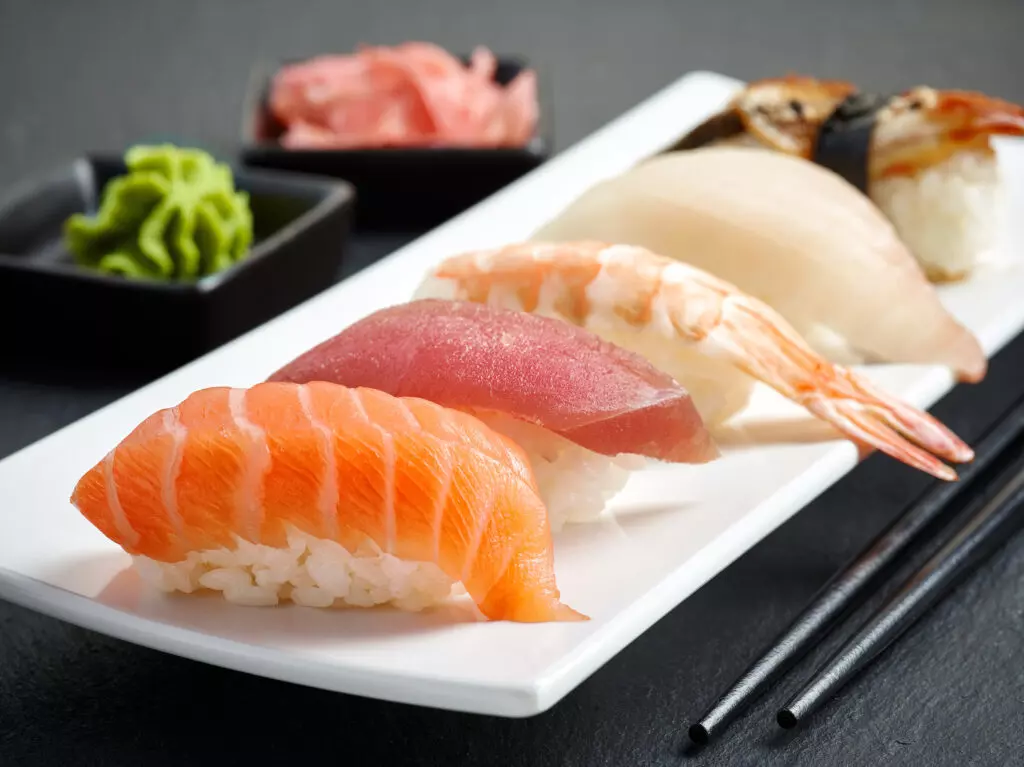
Nigiri sushi is one of the oldest and most traditional types of sushi in Japan. In nigiri sushi, the chef shapes sushi rice into an oblong shape. Then, a piece of seafood or fish is placed on top of the rice.
Nigiri sushi is very simple. There is usually just one ingredient in addition to the rice and no seaweed. Common types of nigiri are salmon, tuna, and eel nigiri. This type of sushi is often eaten by hand since the piece can be too bulky to pick up with chopsticks.
Temaki Sushi
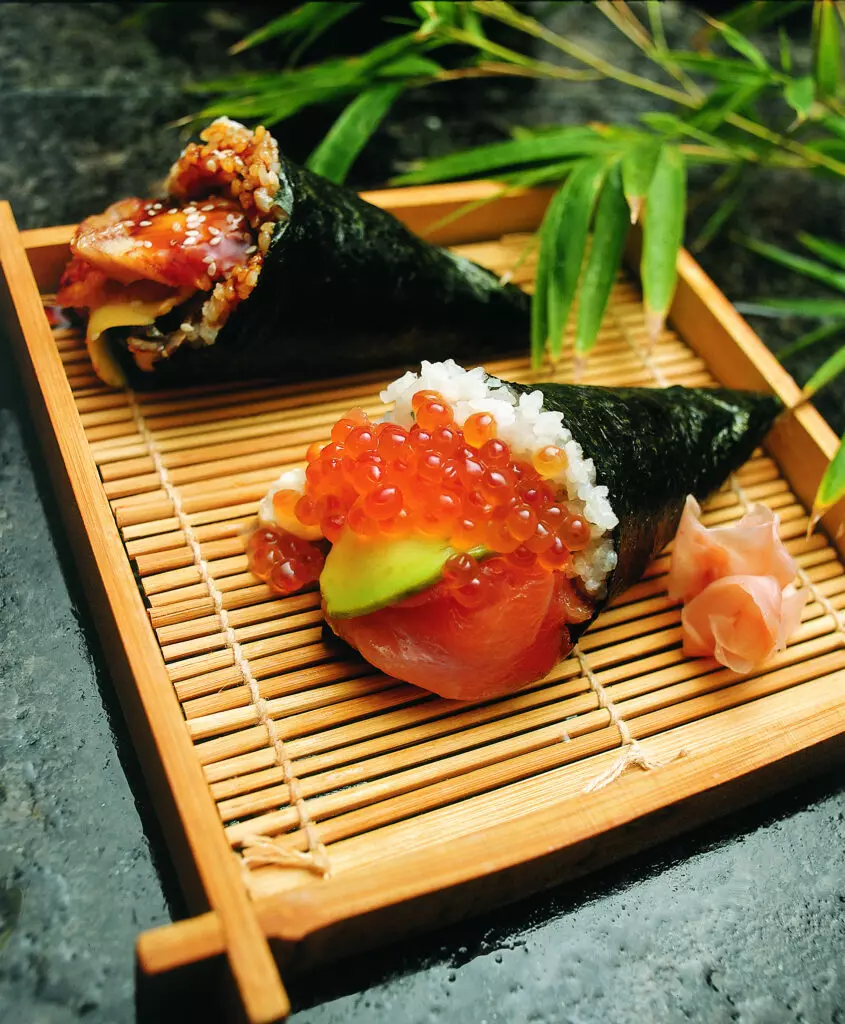
Though not as popular as maki rolls, temaki sushi is the easiest type of sushi to make at home. Temaki sushi, or a hand roll, is a type of sushi where you place rice and fillings on a seaweed sheet then roll it into a cone shape. Because it doesn’t require precise shaping, it is easy and fun for home chefs new preparing to sushi.
What is Sashimi?
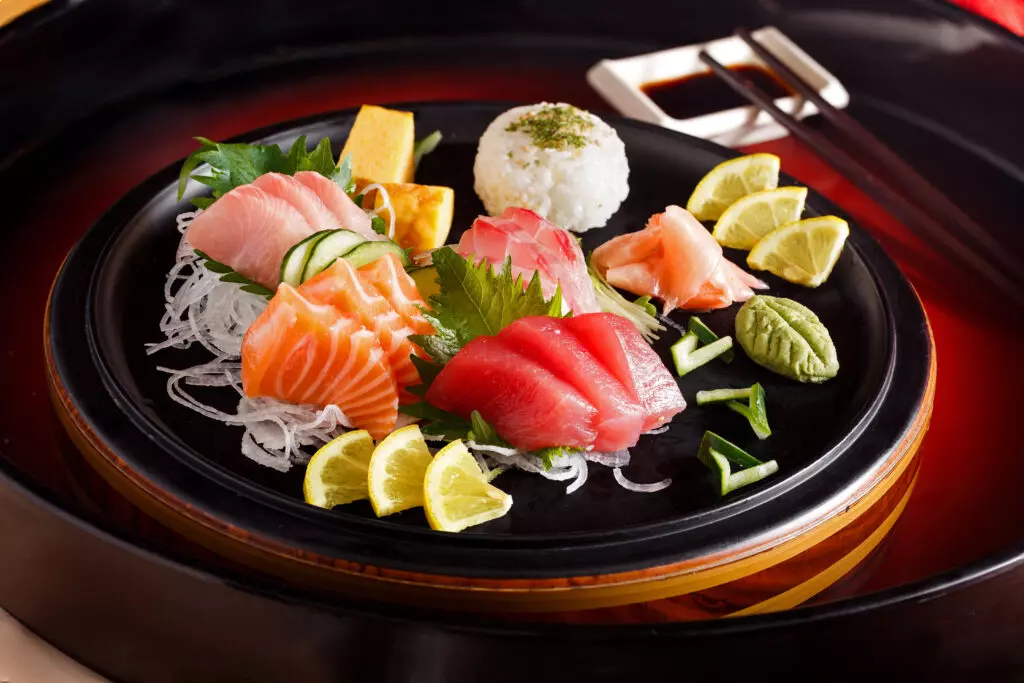
Sashimi consists of thinly sliced raw meat that is almost always fish such as salmon or tuna. It is usually served with soy sauce and wasabi and eaten with chopsticks, often as the first course of a Japanese meal.
Unlike sushi, which always contains rice and often other ingredients, sashimi contains no other ingredients than the sliced fish and garnishments (soy sauce, wasabi, etc.). Also, while some types of sushi contain cooked ingredients, sashimi always consists of raw meat.
Frequently Asked Questions
Is Sushi Healthy?
Many varieties of sushi can be very healthy as they contain fish and vegetables. However, some rolls, such as the Philadelphia roll, don’t contain as many healthy ingredients and should be enjoyed as more of a treat than a nutritional staple.
Also be mindful of the type of fish you are eating as fish have different levels of mercury. Some fish, such as salmon can be eaten every day with no issues. Other fish, such as tuna, should be eaten in moderation while others, such as swordfish and shark should be avoided due to high mercury levels.
Is Sashimi Healthy?
Like sushi, many varieties of sashimi, such as salmon, are very healthy for you. Others, such as shark or swordfish, contain high levels of mercury and should be avoided while others, such as tuna, can be enjoyed in moderation.
Is Sushi or Sashimi Better for you?
The answer to this depends on the type of sushi and sashimi and the ingredients used. For example, a salmon roll would be healthier for you than swordfish sashimi. While, tuna sashimi would be healthier than a Philadelphia roll.
Final Thoughts About the Difference between Sushi and Sashimi
Both sushi and sashimi are Japanese dishes that you can find almost anywhere in the world. I hope this article empowered you with the knowledge to not only feel comfortable in any sushi bar, but also to not be intimidated to try making sushi rolls at home.
For more interesting articles check these out:
How to Prepare Boston Roll Sushi
What’s the Difference Between Chop Suey and Chow Mein?
How Long Does Salmon Last in the Fridge? Your Questions Answered
Also, subscribe to our YouTube Channel for some great videos!
